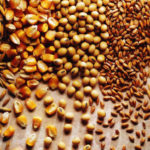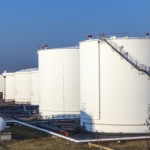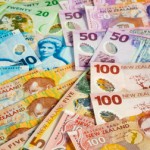The pound soared to the strongest level in more than four years against the US dollar, after a report revealed house prices in the UK rose the most since 2007, adding to signs the economy is gaining traction.
GBP/USD touched a session high at 1.6823 at 02:00 GMT, also the pairs strongest since November 2009, after which the cross erased daily gains to trade little changed at 1.6746 at 09:20 GMT, losing 0.02% for the day. Support was likely to be received at February 14th low, 1.6645, while resistance was to be encountered at November 18 high, 1.6846.
The sterling was supported after the UK property-website operator Rightmove Plc reported that house prices increased 3.3% this month, after climbing 1% in the previous month. On year-over-year basis, house prices surged 6.9% this month, the largest increase since 2007 and after rising 6.3% in January.
The website operator said that the average asking price of a home in England and Wales rose above the 1% stamp duty bracket of 250 000 pounds to 251 964 pounds, which pushes it into the 3% stamp duty bracket. The stamp duty is the tax that new owners are obliged to pay, when being transferred the rights to possess the property by the seller.
Miles Shipside, director of Rightmove, said, cited by The Telegraph: “The shortage of properties on the market and pent up buyer demand is helping to push prices over that £250,000 level. It does mean that moving is more expensive, so as well as higher prices, more buyers are now having to pay additional stamp duty as well.”
Rightmove Plc also reported an 18% increase in the number of new properties listed on the website, or 27 768 monthly on average.
In its quarterly inflation report released on February 12, Bank of England revised its forward guidance, replacing the 7% unemployment threshold with a range of economic indicators, including spare capacity.
BoE said the unemployment rate will probably fall below 7% in the first quarter of this year, but at the same time underscored there was “scope to absorb spare capacity further before raising bank rate” from the current record-low 0.5%. BoE estimated an output gap between 1% and 1.5% of UK gross domestic product.
The central bank raised its forecast for the UK economic growth in 2014 to 3.4% from 2.8% projected in November. It also predicted that the UK economic growth in Q4 will be revised upwards to 0.9% from the 0.7% initially estimated by the statistics office, and projected a similar expansion in the three months through March.
BoE predicted the first increase of interest rates will come in April 2015 and forecast inflation of 1.9% in the next three years, below the central bank target of 2%.
However, market players remained doubtful that BoE Governor Mark Carney will be able to hold down borrowing costs and forecast the central bank will have to raise interest rates sooner than it currently projects, as the UK recovery continues to gain traction.
The sterling has appreciated 12% in 2013, marking the best performance among the 10 developed-nation currencies, which are tracked by Bloomberg Correlation-Weighted Indexes. At the same time, the US dollar has risen 2.5%.
Meanwhile, a survey, conducted by Thomson Reuters and the University of Michigan, showed on Friday that US consumers retained their optimism regarding nation’s economic development in the middle of February. The preliminary reading of the corresponding index of consumer confidence came in at 81.2, which confirmed the final value reported in late January. The median estimate of experts pointed that the index will probably slow down to a reading of 80.5 this month. The data suggested that consumers might be able to increase their spending, after severe winter in January adversely influenced their expenditures.
However, demand for the US dollar was dampened after a report by the US Federal Reserve revealed that the US industrial output declined by 0.3% in January, capping the first monthly drop since April, defying analysts’ predictions for a 0.2% advance and after a 0.3% increase in the preceding month.
US markets are to remain closed today due to a federal holiday honoring the birthday of the first President of the country, George Washington.
Elsewhere, AUD/USD climbed to a daily high at 0.9069 at 1:30 GMT, also the pair’s highest point since January 13th, after which consolidation followed at 0.9050, rising 0.17% for the day. Support was likely to be received at February 14th low, 0.8981, while resistance was to be encountered at January 13th high, 0.9086.





